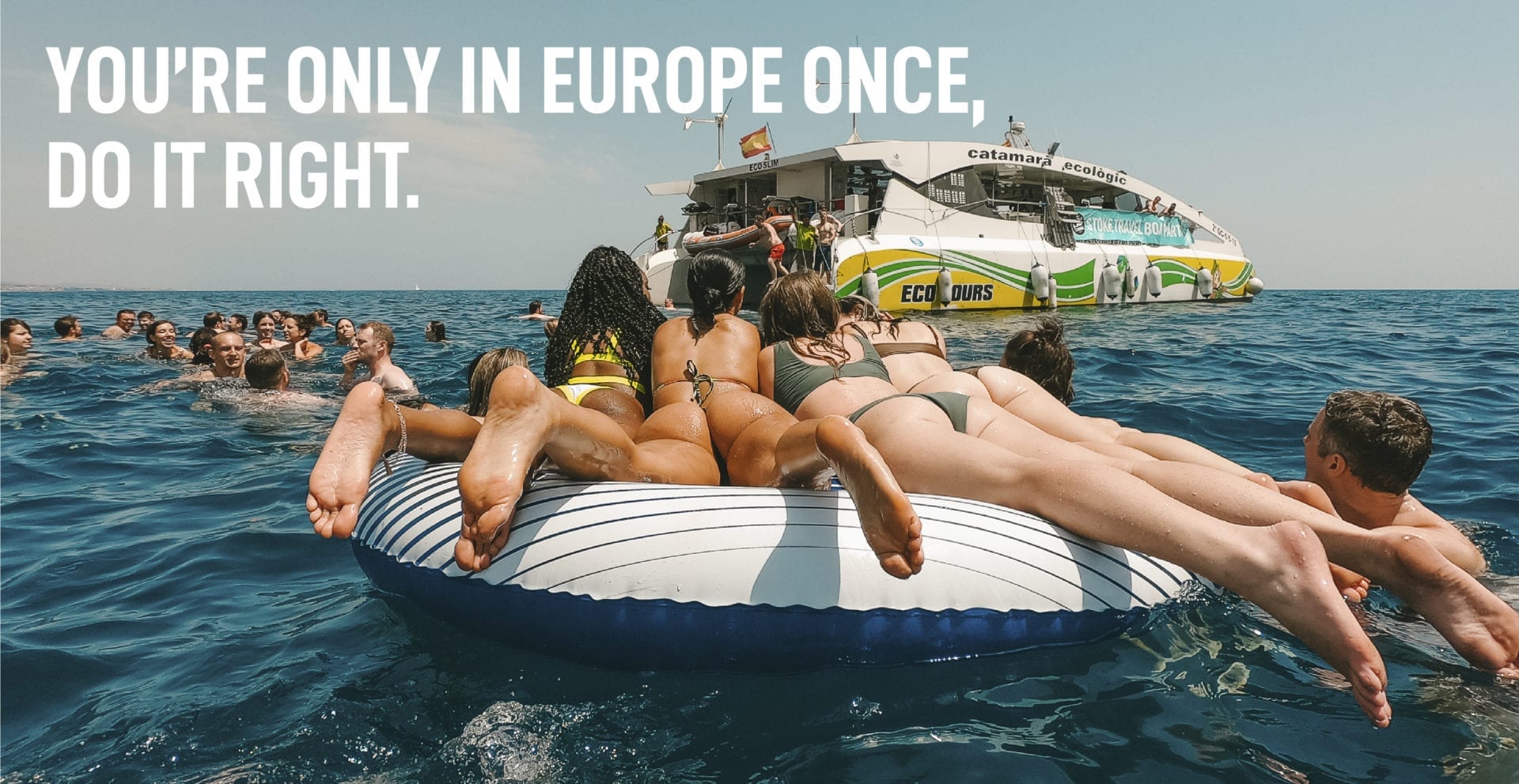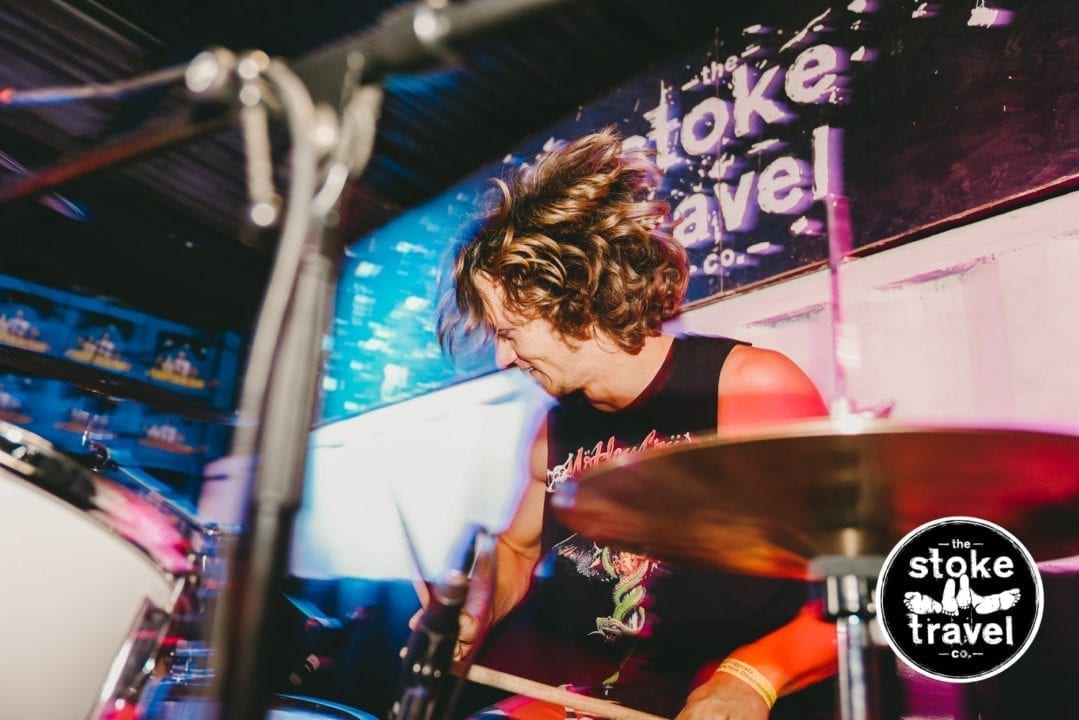Spain…It’s the land of flamenco, fiestas, tapas, sun, sea, sangria, siestas and, eh, Stoke’s Spanish Summer Camps! Unknown to many, however, Spain is also home to a fair amount of absolutely outstandingly scenic and fun hiking trails, many of them within a stone’s throw of our three locations in San Sebastian, Ibiza and the Costa Brava.
But just as dining on the terrace of a fancy tapas restaurant isn’t quite the same as munching the delicacies on offer at your local pub or kebab shop, hiking in Spain is just a little bit different to what you might find back home.
So what do you need to pack? What should you expect from the trails? And where are the best trails to take on outside of the easier-going beach walks organized by Stoke Summer Camps?
In this article, we aim to answer each of the above questions by providing a quick guide to hiking while on your visit to one of Stokes Spanish Camps, including gear and clothing suggestions and a selection of the top trails you can explore around San Sebastian, Ibiza and Costa Brava.
What to Bring on a Summer Hike in Spain
Hikers can be exposed to a variety of conditions on summer hikes in Spain, but the biggest enemy is likely to be the heat instead of the cold and rain. Below, we’ve made a shortlist of the kit and clothing you’ll need to stay safe and suitably un-scorched if taking on any of our selection of hikes near our summer camps.
Clothing
The bottom line is to aim for light, breathable, UV-resistant, non-cotton clothing that’s going to keep you cool and protected from the scorching sun. This includes:
- Shorts or lightweight trousers
- Non-cotton socks
- Synthetic or merino t-shirt or shirt
- Sunhat
- Sunglasses
- Approach shoes (hiking boots are unnecessary)
- Waterproof jacket (the wet stuff falls here too!)
Gear & Supplies
- 15 to 30-litre backpack
- GPS device and/or map and compass
- Suncream
- First aid kit
- Hydration bladder or large water bottle(s).
- Water galore (at least one litre per hour of hiking)
- Snacks
- Rehydration salts
- Trekking poles
- Camera
Great Hikes Near Our Camps
While there are opportunities to take on a number of shorter coastal hikes at all three of our camps, for those of you who fancy tackling something a little more challenging either before or after Stoke Camp, the following options are sure to give you your fill of thrills and let you do a little exploring of the areas surrounding our three camp locations.
San Sebastian
San Sebastián to Pasajes
This 3.5-mile section of the Camino de Santiago Coastal Route takes you from the city directly into far more bucolic, open countryside in little more than fifteen minutes. From the edge of town, the trail skirts the alternately florid and rocky coastline for the duration of the walk to Pasajes, offering up stupendous sea views each step of the way. Although this route is never steep, it’s up and down for the duration and can take up to two hours one-way.
Monte Ulia
The foot of the tree-lined, 797-foot Monte Ulía can be reached from San Sebastián Old Town in around ten minutes on the Pasajes route listed above. Once there, the options abound, with a maze-like network of ancient and more recent trails making their way up through and along the wooded flanks to remains of military lookouts, an old mill, picnic areas, a restaurant and a rocky promontory from where you’ll have superb views of the Bahia de la Concha and the city.
Artikutza
It might be a little out of the way, but those who take on this 10-mile hike on the regional border with Navarre are highly unlikely to regret it. This conservation area is a little bit of a wonderland and enchanted forest combined, being replete with a handful of stunning waterfalls, quiet trails through old-growth forest, murmuring streams and a few enchanting villages that look like they’ve been plucked out of a fairytale and deposited here purely for the purposes of envy-inducing Instagram posts.
Starting from the village of Oiartzun, most hikers head up Mount Bianditz (2726 ft) to take in the views of the French and Basque coastline. From there, an easy trail leads down to Pagoletta and then the almost edibly cute village of Artikutza – a great spot to stop for a bite to eat before heading to the Exkas and Errolarri waterfalls.
Ibiza
Cap des Falco
If you have a decent head for heights and fancy mixing up a coastal walk with some epic sea views from the top of some very airy cliffs, this moderately strenuous hike is well worth checking out. You can shorten the route by catching a bus to Can Tixidor and from there skirt the salt marshes on relatively flat ground until you reach to the Es Codollar, at which point things start getting a little steeper.
After a stretch of ups and downs on the clifftop, the trail winds its way down to the very pretty Cala Llarga beach before ending in Las Salinas – the perfect spot for a post-hike pint and bite to eat.
The whole route is just over 6 miles in length and should take 2-3 hours, depending on how well you fare on those hills and how many photo/beach/beer stops you take along the way!
The Salinas Loop
This 17-mile route begins in Ibiza Town and takes you on a meandering loop around the various attractions of Ses Salines Nature Park via Bossa beach, the Torre de Sa Sal Rossa, Es Cavallet beach, Torre de Ses Portes watchtower, Las Salines beach, and the aforementioned Cap des Falco. On the way you’ll be treated to awesome and almost uninterrupted views of the azure sea and also salt marshes, a shedload of flamingos (who tend to visit in August/September) and never be more than a 25-minute walk from the beach.
The whole trip from Figueretas beach to the rocky shores at Es Codolar and back is a bit of an epic, granted, but if you have time on your hands this minor Odyssey will give you a little bit of everything Ibiza has to offer: sea, sun, sand, salt marshes, wildlife, rolling hills, rocky trails – ah, and a bar or two along the way, too…!
Cap des Llibrell
This short but fairly steep 3.5-mile hike from Cala Llonga beach takes you up the 650-foot Cap des Llibrell and 600-foot Puig des Castellar for epic views back over Cala Llonga and down to Sol d’en Serra beach. The way up is an easy stroll on a wide dirt road but many a hiker has spent time on their backside on the steepish descent!
Costa Brava
Sant Feliu de Guixols to Palamós
This 11-mile clifftop hike explores a particularly exquisite stretch of the Costa Brava coastline, taking in a handful of cute coastal villages, secluded sandy beaches, a nudist beach(!), tall coral cliffs, groves of gnarled coastal pine trees, rocky peninsulas, quaint coves and aquamarine waters. All told, this hike can take up to 6 hours, but if the going gets too tough there are plenty of opportunities to doff your shoes and backpack and take a restorative dip in the Balearic.
Palamós to Calella de Palafrugell
This very popular 7-mile hike could feasibly be added as an extension to our first Costa Brava hike – but only if you’ve got particularly steely calves and are happy to put in up to twelve hours on the trails in a single day or take your camping gear and break it into two.
On its own, this trail offers up a little bit of everything Costa Brava has to offer in a relatively short distance, including a handful of pretty beaches (Cala Margarida, Platja de la Fosca, Cala Castell, Cala Estreta) a medieval-style castle in the Sculpturepark Jardíns de Cap Roig (botanical gardens), rows of traditional fishing huts in hidden enclaves, views of several small islands off the coast and an utterly winning final pit-stop in the ancient fishing village of Palafrugell.
Puig de Ses Cadiretes (Cadiretes Massif)
The Cadiretes Massif is a nature and wildlife reserve located between the towns of Sant Feliu de Guíxols and Lloret de Mar.
The hike up to the top of the massif’s highest mountain, the Puig de Cadiretes (1,700 ft.), starts at the reserve’s tourist offices and wanders gently up through dense Mediterranean forest (think: shade!) on gentle inclines and well-maintained trails until throwing in a short but steep rocky section just below the summit. The views from the top are nothing short of stupendous and well worth every ounce of effort you put in to get up there.
All told this route measures just under 9 miles and takes 4-6 hours to complete.
The post A Hiker’s Guide to Stoke’s Spanish Camps appeared first on Stoke Travel.
Source: https://stoketravel.com/feed/




























